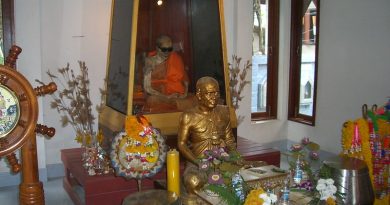Sounds of Nature: Throat Singers of Tuva
Culture Facts
Where: Tuva, Outer Mongolia, Northeast Asia – also practiced in Arctic, South Africa & Japan
What’s it about: Creating overtones for harmonic vocal effects, imitating sounds of nature
Uses: Expression of animism, entertaining children.
Throat singing, or khoomii from the Mongolian word for throat, is a form of singing developed centuries ago by nomads in a region called Tuva, an independent republic between Mongolia and Siberia, though it is practiced in the Altai region of western Mongolia. The practice is said to have originated in a contest between rural herdsmen to see how far could get voices to carry through valleys, which has since developed into an annually held competition in Tuva. The songs that are produced are inspired by the natural sounds of the Mongolian landscape, and supposedly mimic noises such as trickling streams and howling winds. The tradition is linked to the Mongolian belief in animism, that natural object have souls or are inhabited by spirits and by mimicking these sounds, humans can harness the powers of these spirits.
The Science of the Throat
The sound of throat singing is incredibly unusual. It has been described rather as vocal or noise creating breathing games. It involve a single singer producing two or three notes simultaneously, usually a low and sustained background note, with a series of melodic notes overlaid, and which can be stylised to duplicate the natural sound desired. The end result is a slightly eerie and repetitive but strangely fascinating tune. Mongolian throat singing has begun to achieve international fame, and professional ensembles, such as the Huun-Huur-Tu, have gained a kind of celebrity like status within their own country, and around the world.
Like much else in Mongolia, throat singing is surrounded by superstition. Practitioners believe that they must be in uplifted mood, and that soul and spirit must be strong for singing to be successful. There is also something of a taboo against women participating in throat singing due to an enduring belief that it causes infertility, though this superstition is gradually diminishing.
Other Tribal Throat Singers
A few other central Asian countries have similar traditions; some forms of Buddhist chanting have the structure of a series of harmonic sung over a fundamental, single pitch. More interestingly, the other practitioners of this bizarre musical method are the Inuit, or Eskimos, or the Northern reaches of America, a small group known as the Xosa of South Africa and the Ainu of Northern Japan, until late last century. The wide dispersal of these isolated groups is explained by the wide spread immigration of these nomadic people hundreds of thousands of years ago. Of these groups we know most about the Inuit, where the singing is performed by the women rather than the mean, and is believed to have originally been used to entertain children.
Drawling Songs
Another traditional form of singing which is still practised is urtyn-duu, generally referred to as long songs (some songs are as long as 20,000 verses!) or drawling songs. Probably influenced by ancient Chinese traditions, these songs involve the relation of traditional rural love stories, which would have been sung while galloping across the steppes on horseback. Like throat singing, it involves complicated, and drawn out vocal sounds unlike anything else.
More Information
Huun-Huur-Tu
Internationally renowned Tuvan throat singers
Order their CD Edge of Blue Heaven: A Journey Through Mongolia from Amazon.com now
Khoomei – How To’s And Why’s
Michael Emory’s guide to throat singing with exercise to practice.
Inuit Throat Singing
Information on the international distribution of the practice of Throat Singing, and an interview with an artist from Quebec.
By Guilia Vincenzi




